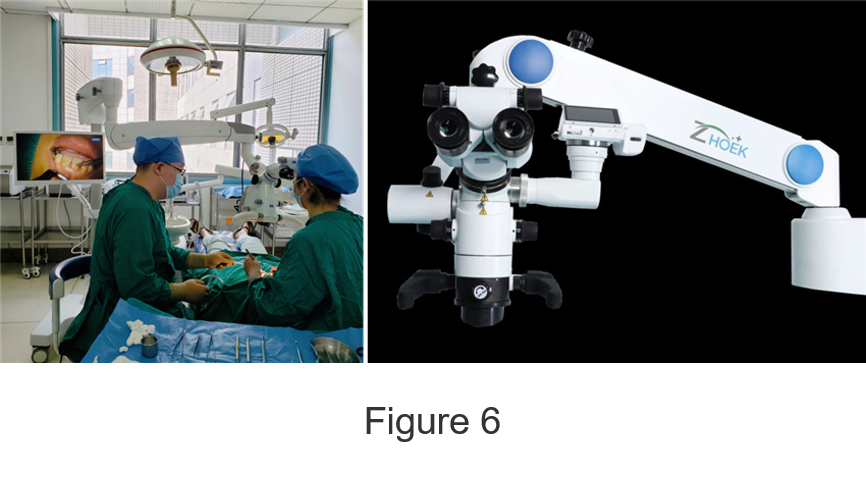

Guided tissue regeneration (GTR) is a surgical technique commonly used to prevent apical migration of gingival epithelial and connective tissue cells by using a barrier membrane. GTR provides maintenance of a wound space into which a selective population of cells is allowed to migrate, favoring the formation of a new periodontal attachment (Figure 1).
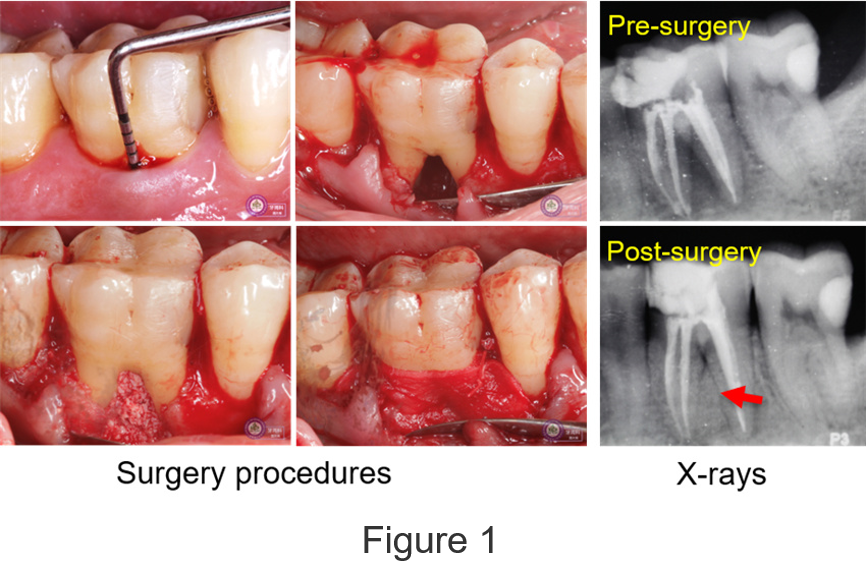
Concentrated growth factor (CGF) is a kind of autologous platelet concentrate that has recently been used for bone healing therapy. The application of CGF in periodontal surgery can promote periodontal tissue regeneration (Figure 2).
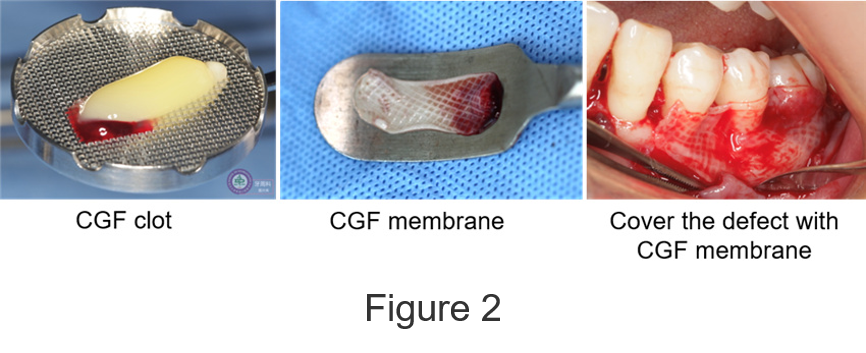
Crown lengthening surgery is a surgical procedure aimed at removal of periodontal tissue to increase the clinical crown height, which can be beneficial to the restoration of the teeth (Figure 3A) or the solution of aesthetic problems such as “gummy smile” (Figure 3B).
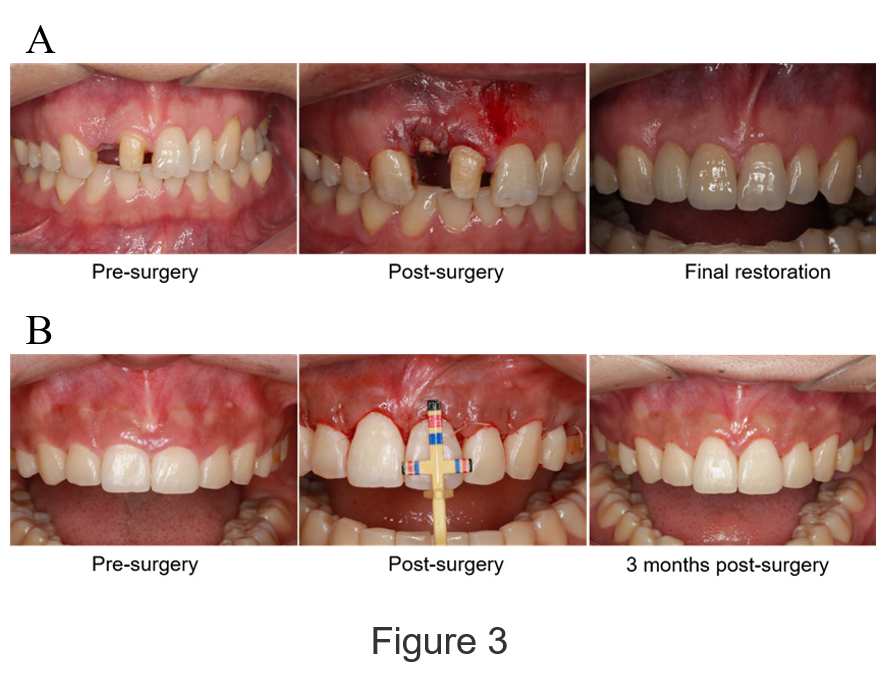
A variety of dental lasers have been used in non-surgical and surgical periodontal therapy including pocket debridement (Figure 4A), excision of epulis (Figure 4B), removal of gingival melanin pigmentation (Figure 4C), etc.
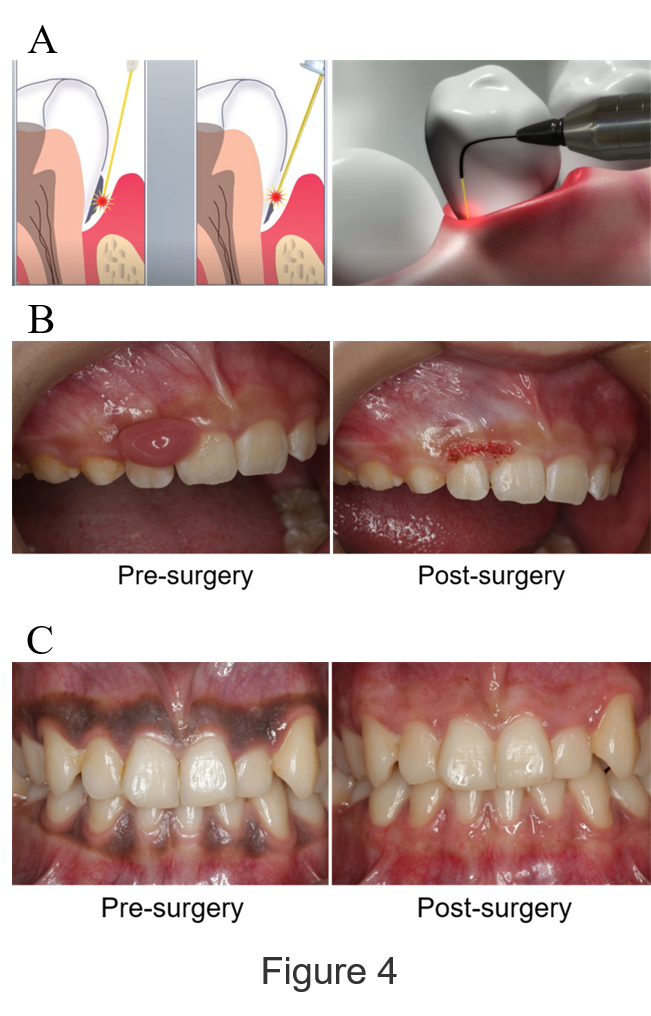
Mucogingival surgeries are widely used to correct aberrant periodontal soft tissues, such as gingival recession (Figure 5A), lack width of keratinized gingiva (Figure 5B, left) and abnormal frenum attachment (Figure 5B, right).
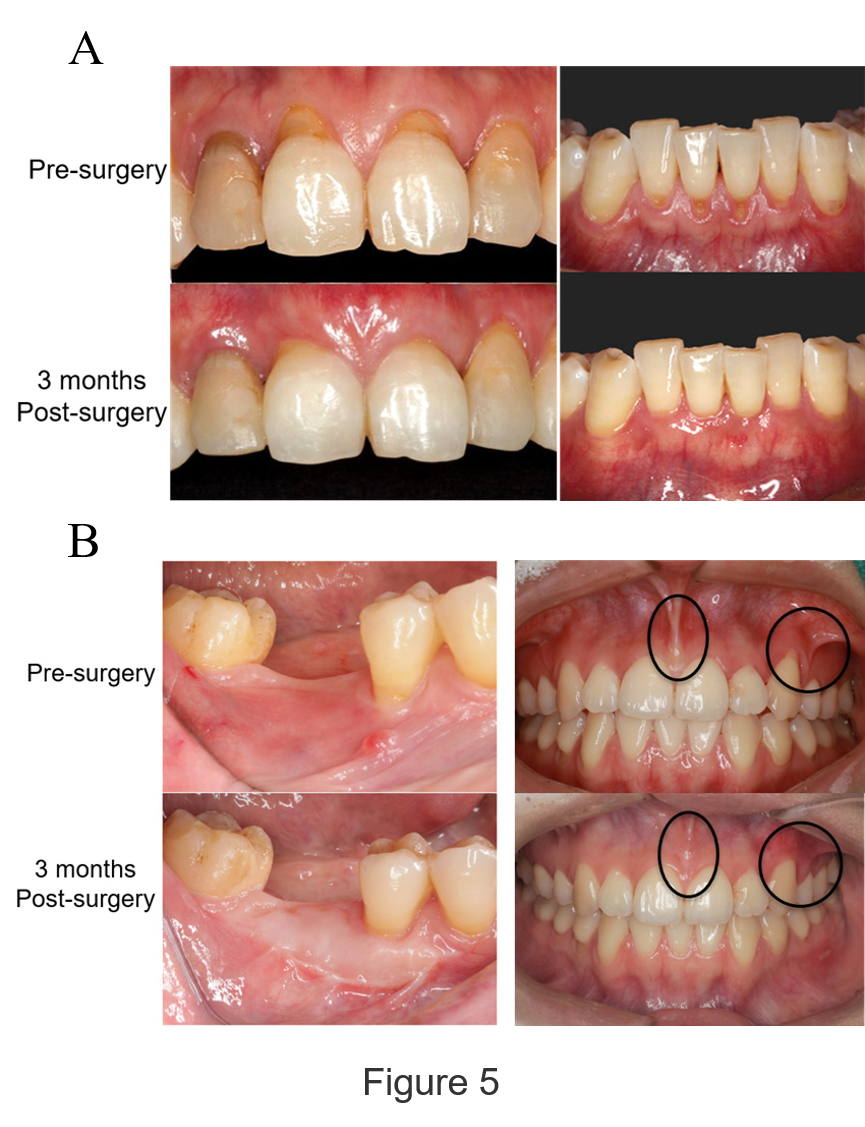
Periodontal endoscope and dental operative microscope are used in minimal invasive periodontal treatment (Figure 6).
